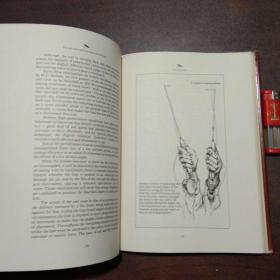How to Skillfully Break a Fishing Line: Techniques for the Aspiring Angler
Fishing, an age-old pastime, requires not only patience and understanding of the water but also a certain level of skill and finesse. One such skill is the ability to effectively break a fishing line when necessary. Whether it's to prevent a tangled mess or to save a prized catch, knowing how to skillfully break a fishing line can be a game-changer for any angler. In this article, we'll delve into the various techniques and tips that can help you master this crucial aspect of fishing.
Understanding the Basics of Fishing Line
Before we dive into the techniques, it's important to understand the basics of fishing line. There are several types of fishing lines available, each with its own strengths and weaknesses. These include monofilament, fluorocarbon, braid, and leaders. Each type has different breaking strengths and stretch properties, which can affect how you break the line.
Monofilament Line
Monofilament is the most common type of fishing line and is known for its flexibility and ease of handling. To break a monofilament line, you can use the following technique:
- Hand Tension: Gently pull on the line with both hands, applying increasing tension until the line breaks. It's important to do this slowly and steadily to avoid sudden snaps that can damage your hands or the equipment.
- Knotless Loop: Create a knotless loop in the line and then pull on the loop until the line breaks. This method is particularly useful when you need to break the line quickly without a knot.
Fluorocarbon Line
Fluorocarbon line is more transparent and has less stretch than monofilament, making it ideal for certain fishing situations. Here's how to break fluorocarbon line:

- Tension and Twisting: Similar to monofilament, apply tension to the line and twist it slightly as you pull. This can help in breaking the line at a specific point.
- Bend and Snap: Gently bend the fluorocarbon line at a 90-degree angle and then release it. The sudden release can often break the line, especially if it's near the knot or lure.
Braided Line
Braided line is known for its strength and sensitivity. Breaking braided line requires a different approach:
- Tension and Twisting: Apply tension to the line and twist it several times. The twisting action can help in breaking the line at a desired point.
- Tie a Knot: If you need to break the line at a specific length, tie a knot at that point and then pull on the knot until the line breaks.
Leaders
Leaders, which are often made of a different material than the main line, are used to protect the main line from abrasive surfaces. To break a leader:
- Tension and Twisting: Apply tension to the leader and twist it as you pull. This can help in breaking the leader without affecting the main line.
- Cutting: If the leader is too tangled to break, you can carefully cut it with a pair of fishing scissors or a knife, ensuring not to damage the main line.
Safety Precautions
While breaking a fishing line is a necessary skill, it's important to do so safely. Here are some precautions to keep in mind:
- Wear Protective Gear: Use gloves to protect your hands from sharp edges and sudden snaps.
- Check for Knots: Before attempting to break the line, ensure that there are no knots or kinks that could cause the line to break unexpectedly.
- Be Aware of Surroundings: When breaking a line, be aware of your surroundings to avoid injury to yourself or others.
Conclusion
Breaking a fishing line is an essential skill for any angler. By understanding the different types of fishing lines and the techniques to break them, you can become a more efficient and effective angler. Remember to always prioritize safety and practice these techniques in a controlled environment before heading out on the water. With a bit of practice and patience, you'll be able to handle any situation that arises on the fishing trip. Happy fishing!












